Google has made waves in the artificial intelligence community with its latest release, Gemini 2.0 Flash Thinking Experimental. This groundbreaking model introduces a unique "thinking pause" feature while maintaining faster performance and, remarkably, remains free for users. The development marks a significant shift in how AI models approach complex problem-solving. Let’s see what it is all about and get to know this new Gemini 2.0 Flash Thinking model.
A New Approach to AI Reasoning
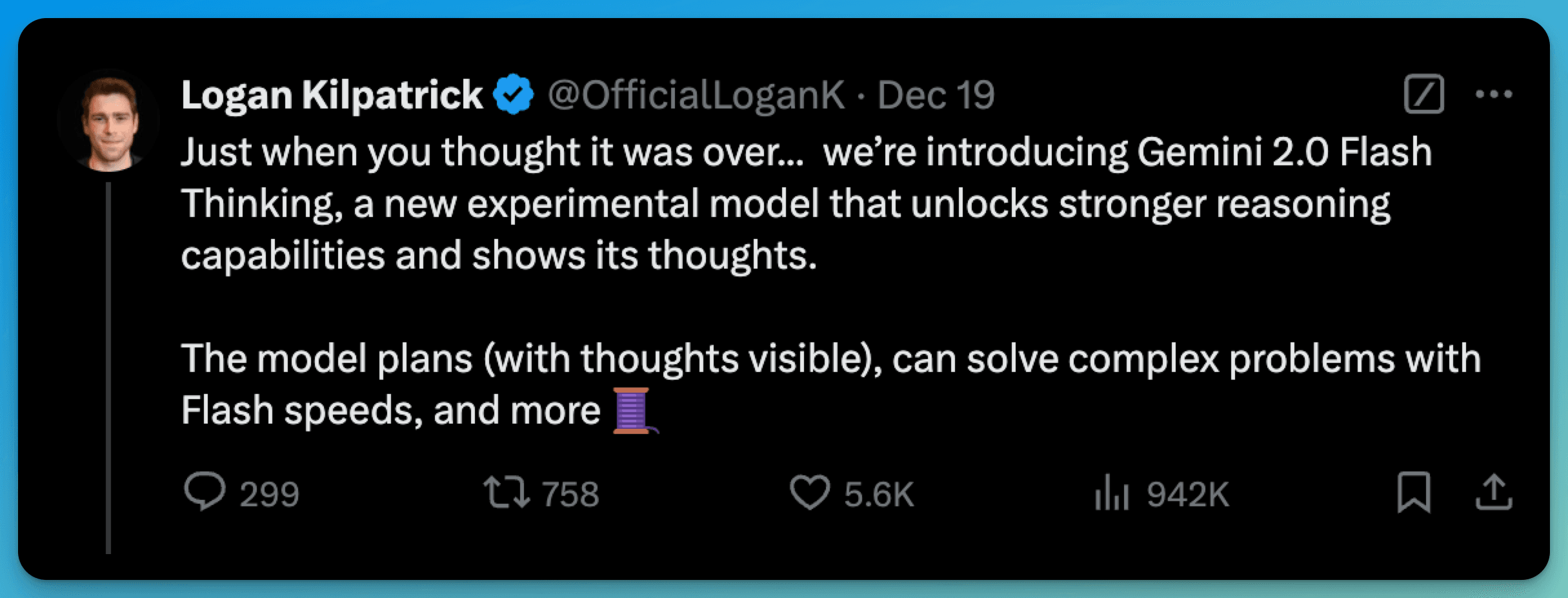
The standout feature of Gemini 2.0 Flash Thinking is its ability to demonstrate its thought process explicitly. Similar to OpenAI's o1 model, it takes deliberate pauses to process complex problems.
This unique "thinking pause" feature sets it apart from all the other models. This model can explicitly show its thought process while solving problems. This transparent approach allows users to understand how the AI reaches its conclusions, making it more trustworthy and easier to work with.
Another thing that makes it unique among all the other AI models is its ability to maintain higher speeds while doing so, and it is free to use. This balance of thoughtful analysis and quick response times makes it particularly valuable for both simple and complex tasks.
Performance That Sets New Standards
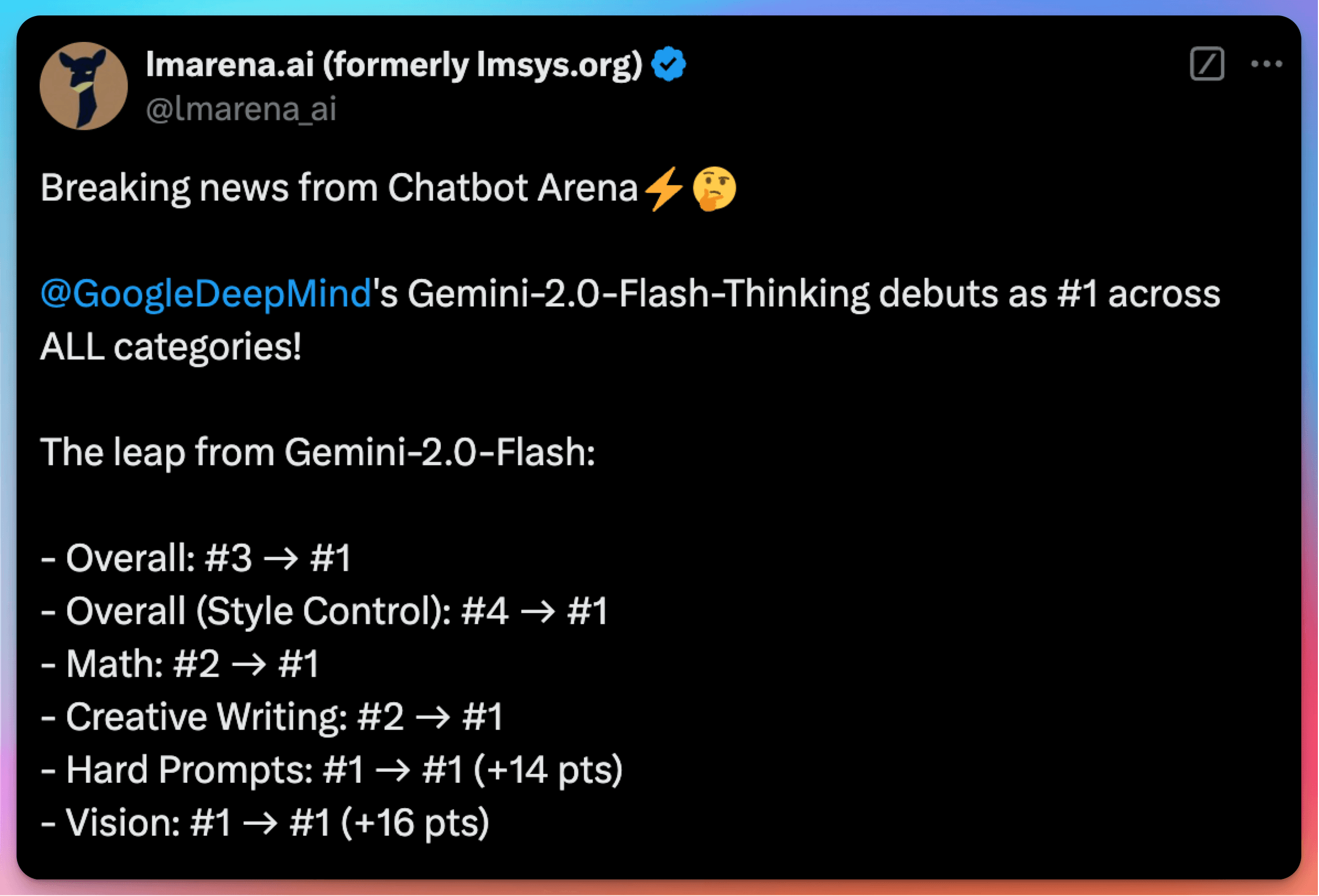
Early adopters have reported impressive results, with the model showing notably faster performance compared to other reasoning-focused AI systems. Despite incorporating additional computation time for improved reasoning, the model has managed to secure the top position in the Chatbot Arena across all categories – a testament to its balanced approach to speed and accuracy.
According to data from lmarena.ai, Gemini 2.0 Flash Thinking has made impressive improvements from its previous version:
Moved from third to first place in overall rankings
Jumped from fourth to first in style control
Advanced from second to first in mathematics
Improved from second to first in creative writing
Maintained its leading position in hard prompts with a 14-point improvement
Strengthened its top position in vision tasks with a 16-point gain
You can check the tests at imarena.ai
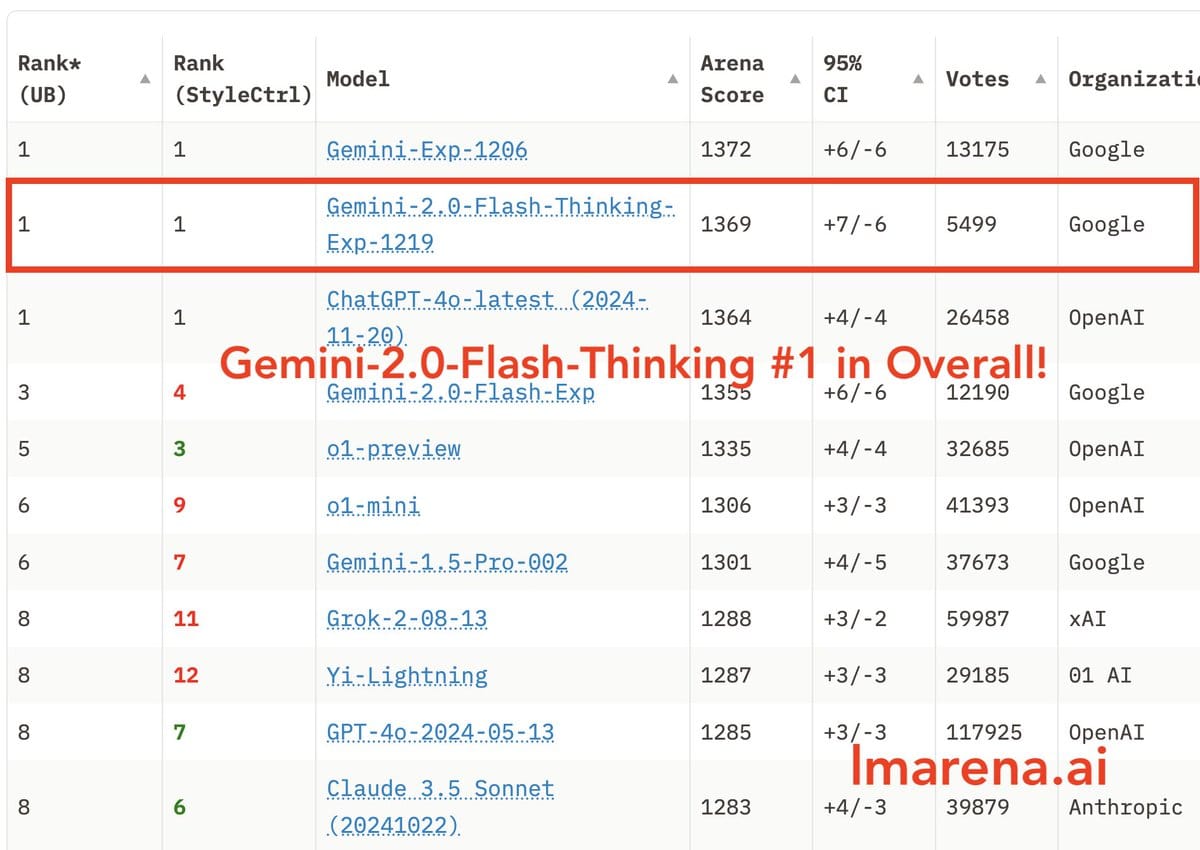
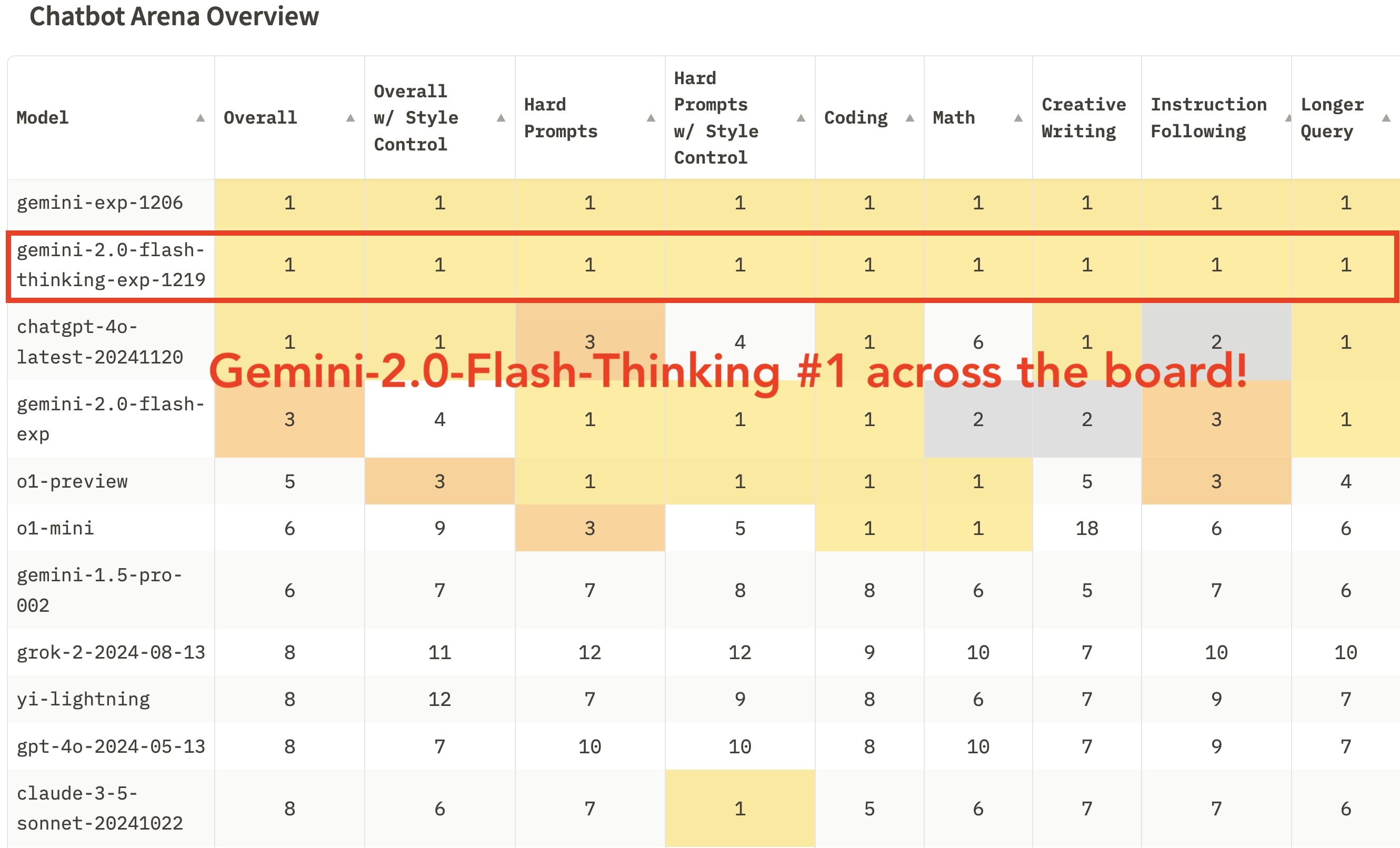
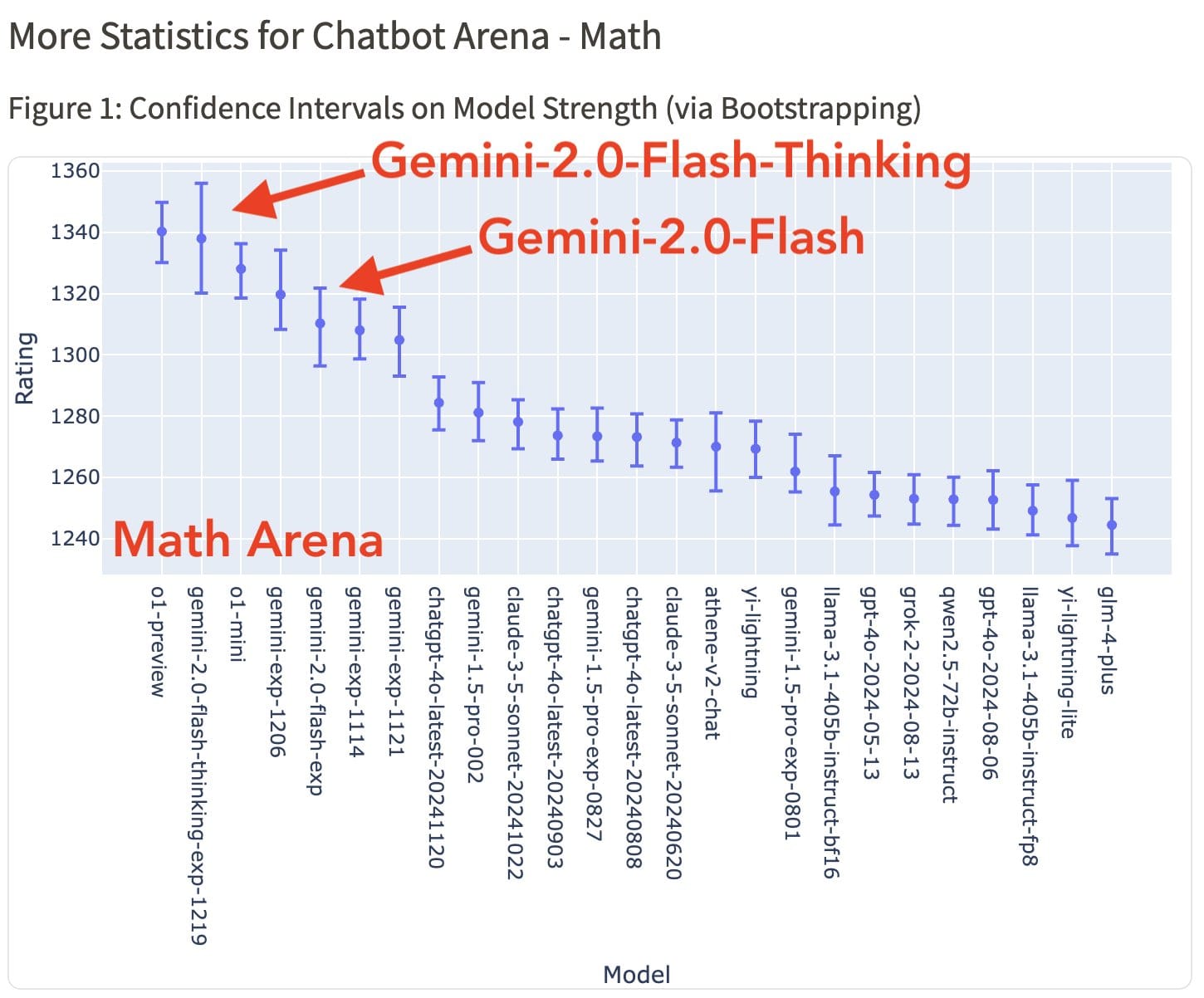
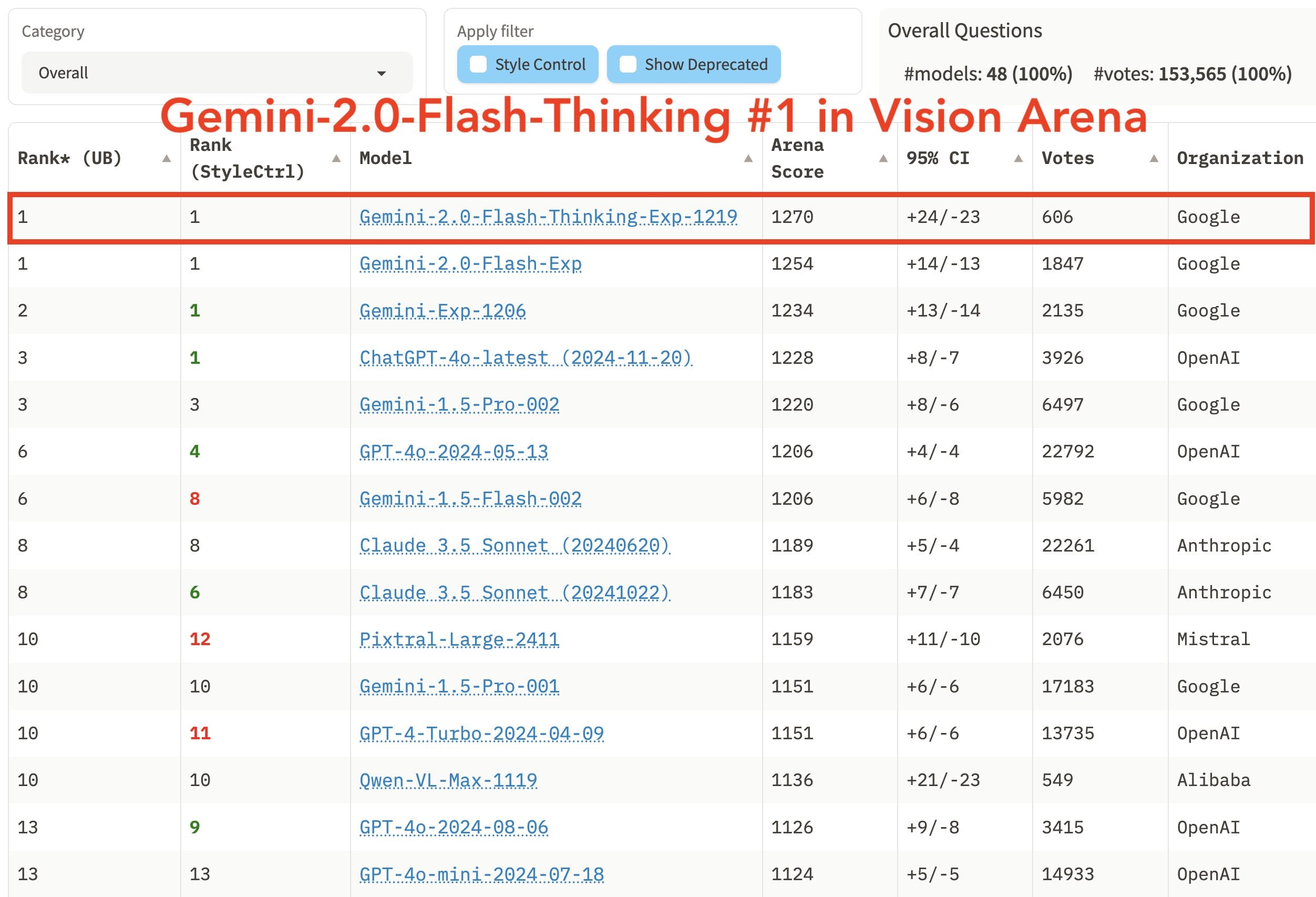
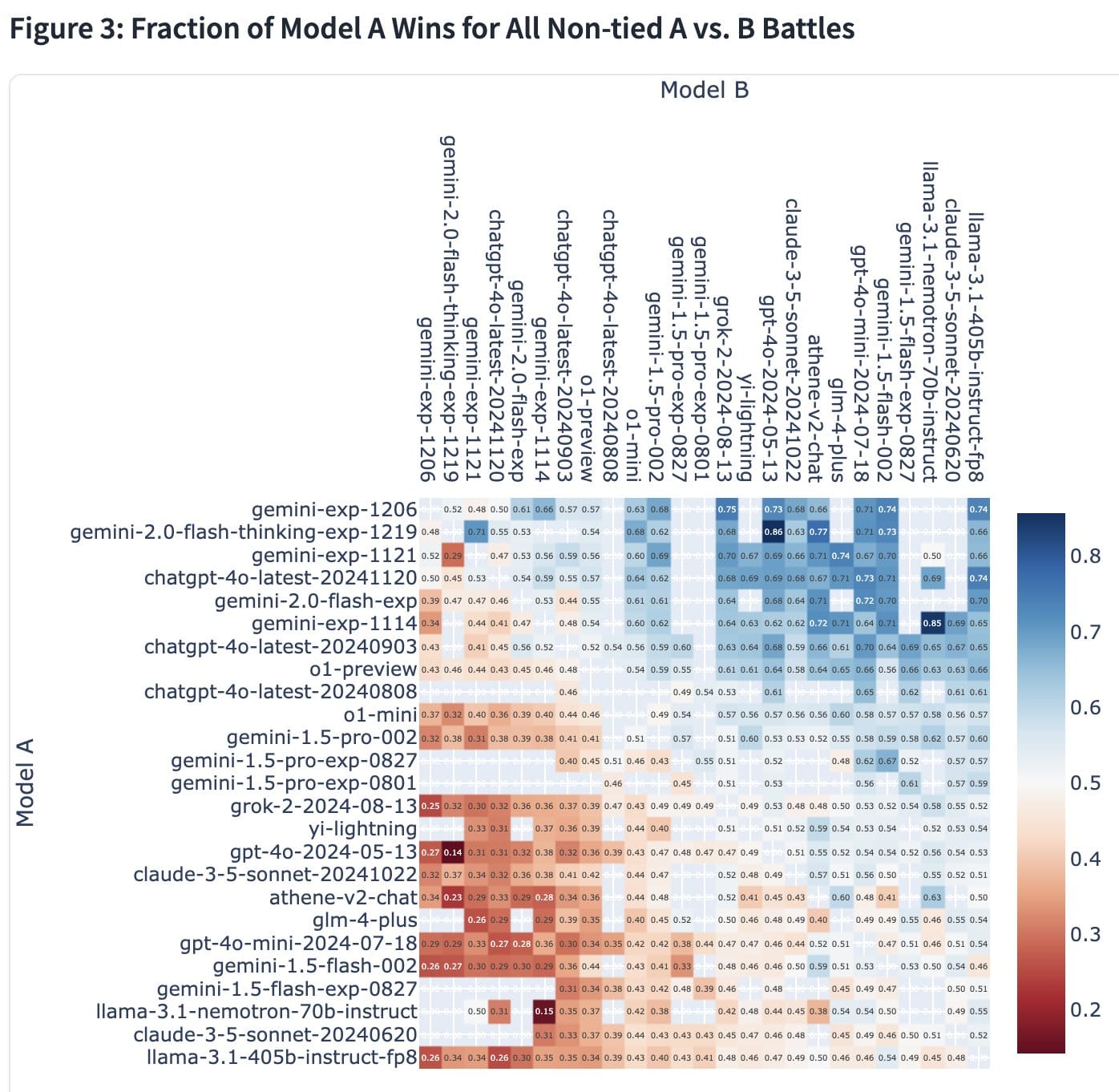
Accessibility at the Forefront
In a notable departure from industry trends, Google has made this advanced technology freely available through multiple platforms:
The Gemini API
Vertex AI
This approach stands in contrast to competitors who continue to increase prices for their top-tier models, making advanced AI capabilities more accessible to developers, businesses, and everyday users.
What This Means for Users
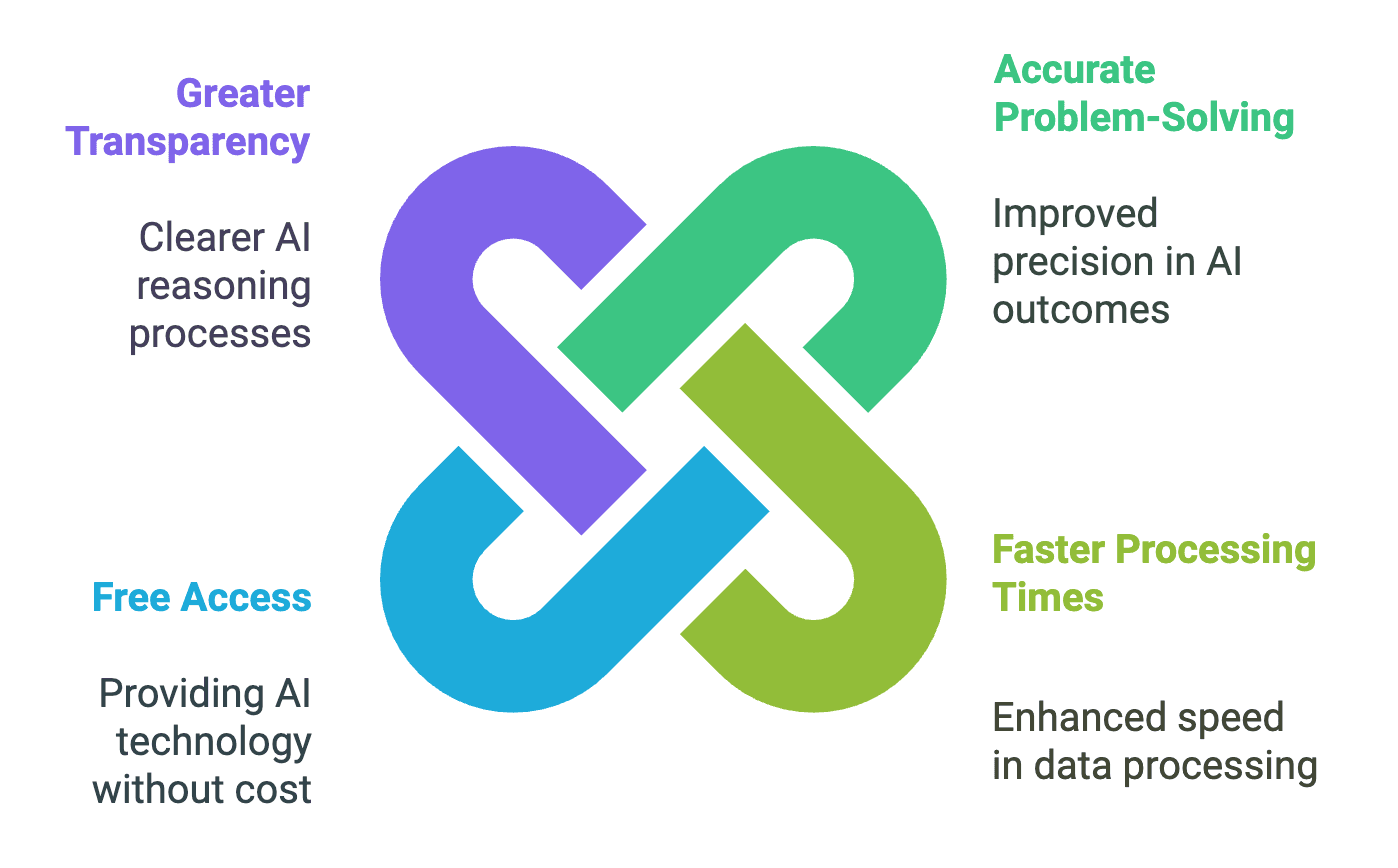
The introduction of Gemini 2.0 Flash Thinking represents more than just technological advancement. It offers:
More accurate problem-solving capabilities
Faster processing times
Free access to top-tier AI technology
Greater transparency in AI reasoning processes
Real-World Applications of Gemini 2.0 Flash Thinking Model
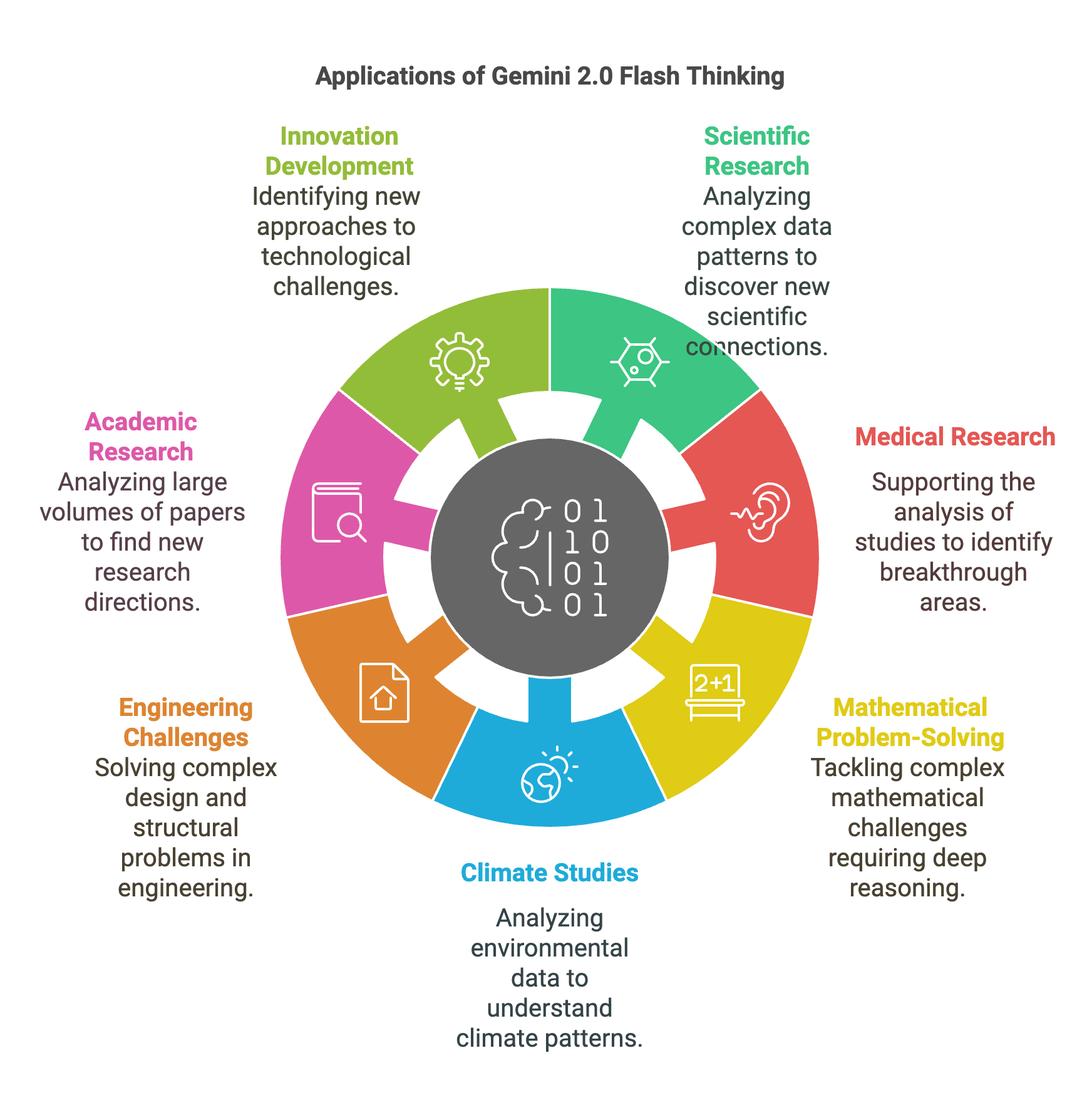
While Gemini 2.0 Flash Thinking has been designed to handle various tasks, its true power lies not in everyday activities but in tackling complex challenges that push the boundaries of current research and innovation.
Where it is Actually useful:
Unlike basic AI tools that help with emails or simple tasks, Gemini 2.0 Flash Thinking's advanced reasoning abilities make it particularly valuable for:
Scientific Research: Helping researchers analyze complex data patterns and discover new connections in their fields
Medical Research: Supporting the analysis of medical studies and helping identify potential breakthrough areas
Mathematical Problem-Solving: Tackling complex mathematical challenges that require deep reasoning
Climate Studies: Analyzing environmental data to help understand climate patterns and potential solutions
Engineering Challenges: Helping solve complex design and structural problems in various engineering fields
Academic Research: Supporting scholars in analyzing large volumes of academic papers and finding new research directions
Innovation Development: Helping identify new approaches to existing technological challenges
Google offers this powerful tool freely through their platforms, allowing developers to create specialized applications that can tackle complex problems in research, analysis, and innovation. This makes advanced problem-solving capabilities more accessible to those working on groundbreaking projects.
The tool shows us that while it might not revolutionize our daily email writing or social media posts, its real value lies in helping solve the bigger challenges facing our world today, from scientific discoveries to technological breakthroughs.
Looking Ahead
As the race for advanced AI reasoning capabilities intensifies, Google's latest offering suggests a future where sophisticated AI technology becomes more accessible while maintaining high-performance standards. This development could accelerate innovation across industries and democratise access to advanced AI capabilities.
The release of Gemini 2.0 Flash Thinking Experimental demonstrates Google's commitment to pushing the boundaries of AI technology while keeping it accessible to all users. As the technology continues to evolve, it will be interesting to see how this model influences the broader AI landscape and what new possibilities it opens up for developers, businesses, and end-users alike.
FAQs
1. Does the "thinking pause" feature slow down the overall performance?
Despite incorporating pauses for reasoning, the model maintains faster performance compared to similar AI systems. The balance between thoughtful analysis and speed actually improves its accuracy while keeping response times efficient.
2. How does it compare to OpenAI's models in terms of accessibility and cost?
Unlike competitors who charge premium prices, Google offers Gemini 2.0 Flash Thinking for free. This makes advanced AI capabilities accessible to everyone, from individual researchers to large organizations, without cost barriers.
3. If it's not ideal for daily tasks, what is it best used for?
The model excels in complex research tasks, scientific discoveries, and breakthrough innovations. It's particularly powerful for analyzing research data, solving mathematical challenges, and helping with engineering problems that require deep reasoning capabilities.

![Best AI Tools for COOs Managing Confidential Data & Operations [2026 Study]](https://assets.superblog.ai/site_cuid_cl495vqej08071jpawt8inf39/images/a-flat-vector-style-illustration-featurityjvm9kas5m25jbi7ok94a4-05p3k-tlu196gydhjlxg-1765379846137-compressed.png)
![12 Best AI Tools for CHROs: Automate Recruiting, Engagement & Analytics [2026 GUIDE]](https://assets.superblog.ai/site_cuid_cl495vqej08071jpawt8inf39/images/a-flat-colorful-illustration-of-a-profes3lg5dahs6e50g19rranfgbgiidh3jswuudan2altv9q-1765378364310-compressed.png)
![Best AI Project Management Software: 12 Tools Compared [2026 Guide]](https://assets.superblog.ai/site_cuid_cl495vqej08071jpawt8inf39/images/a-flat-colorful-illustration-featuring-a0ert4ownqhingorc2ibulgh-nv7vuys0gndyrmzirruq-1764778736290-compressed.png)